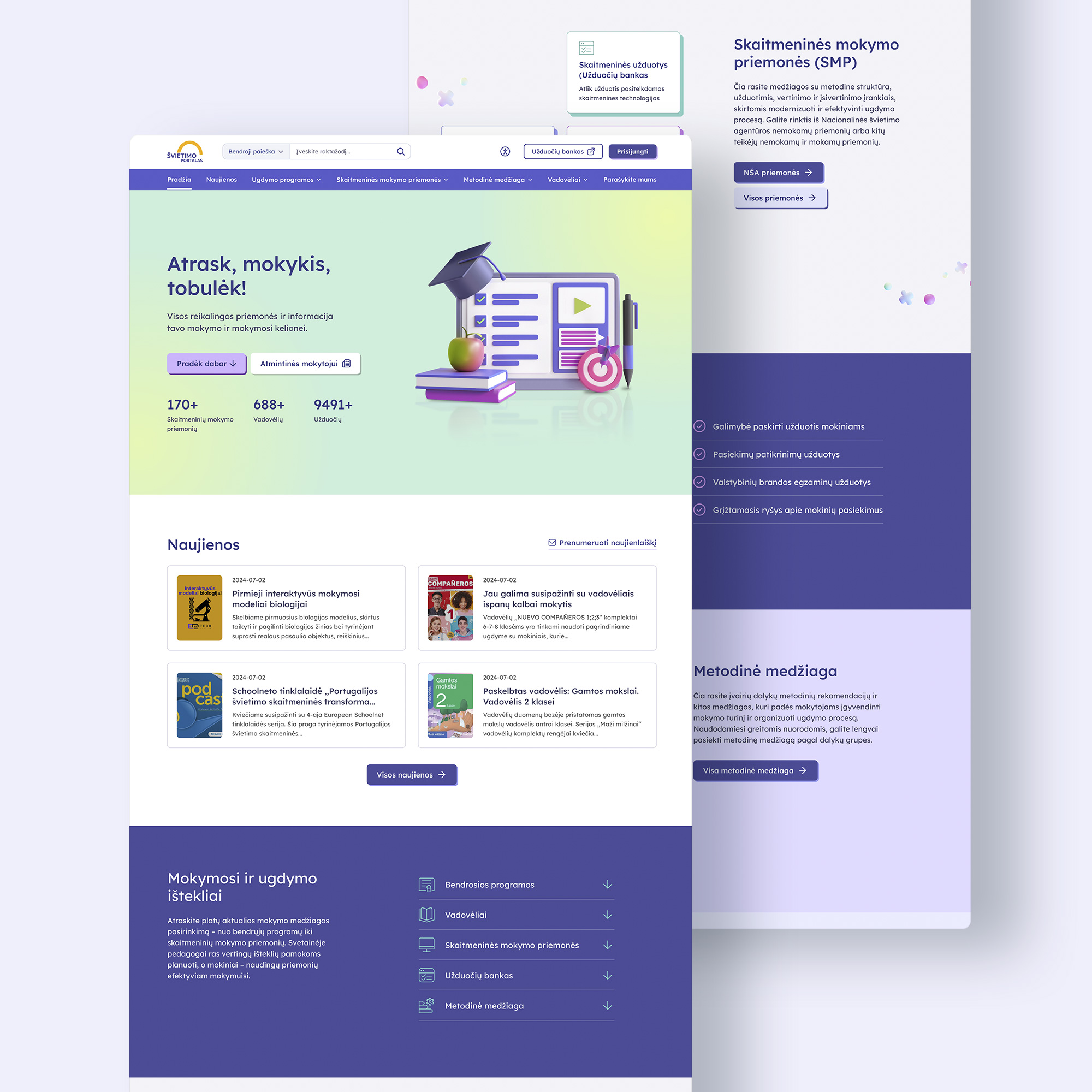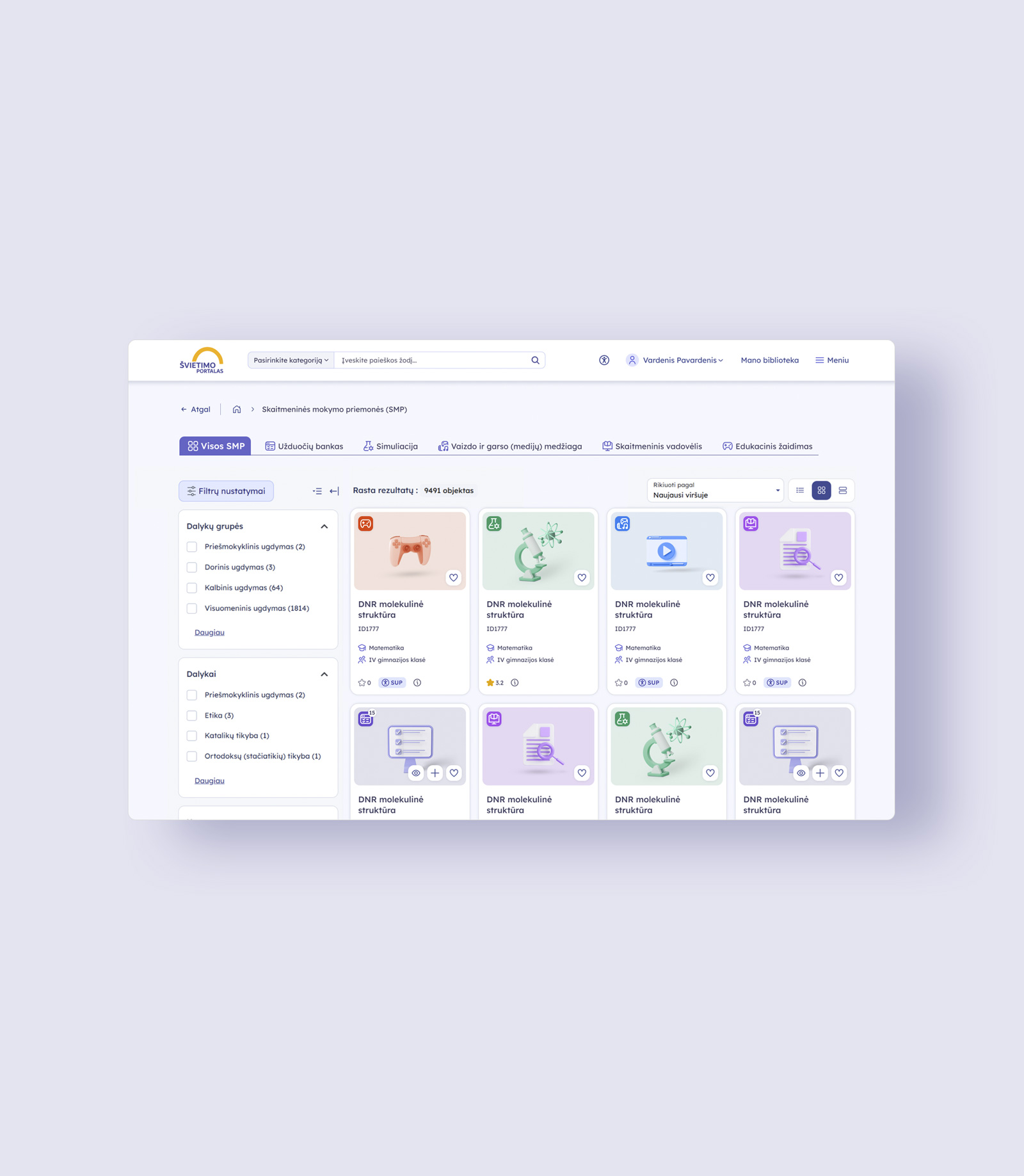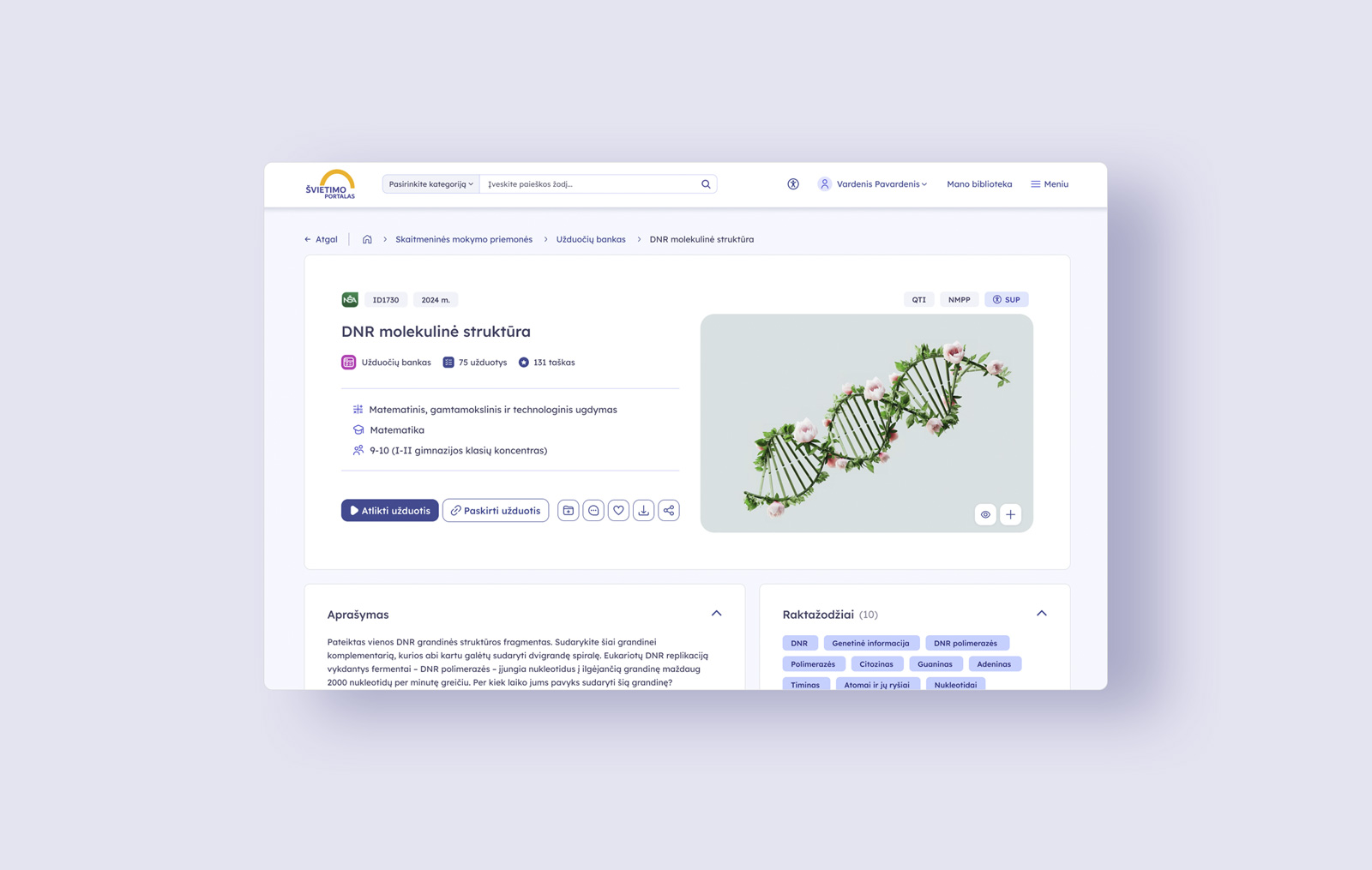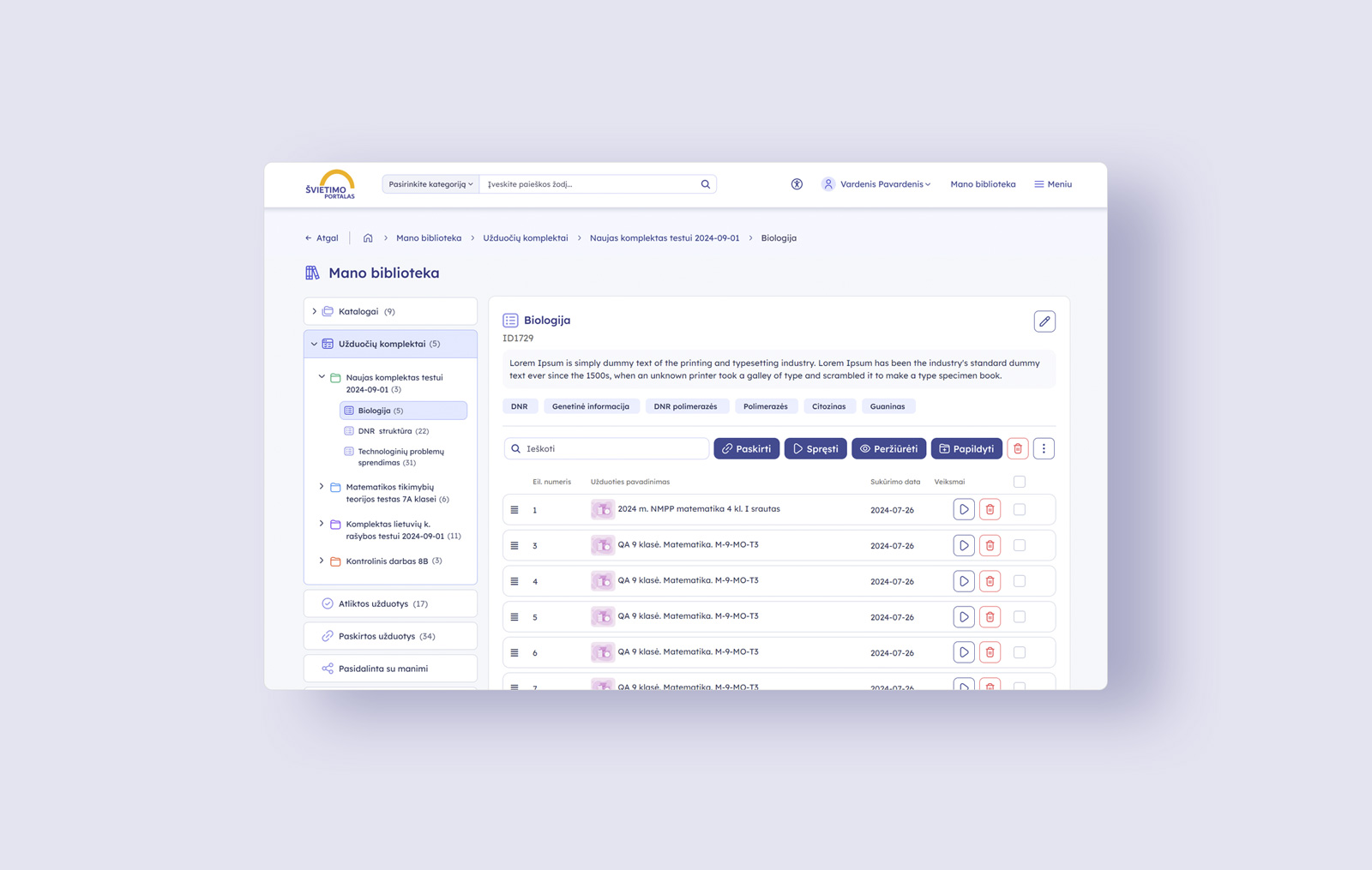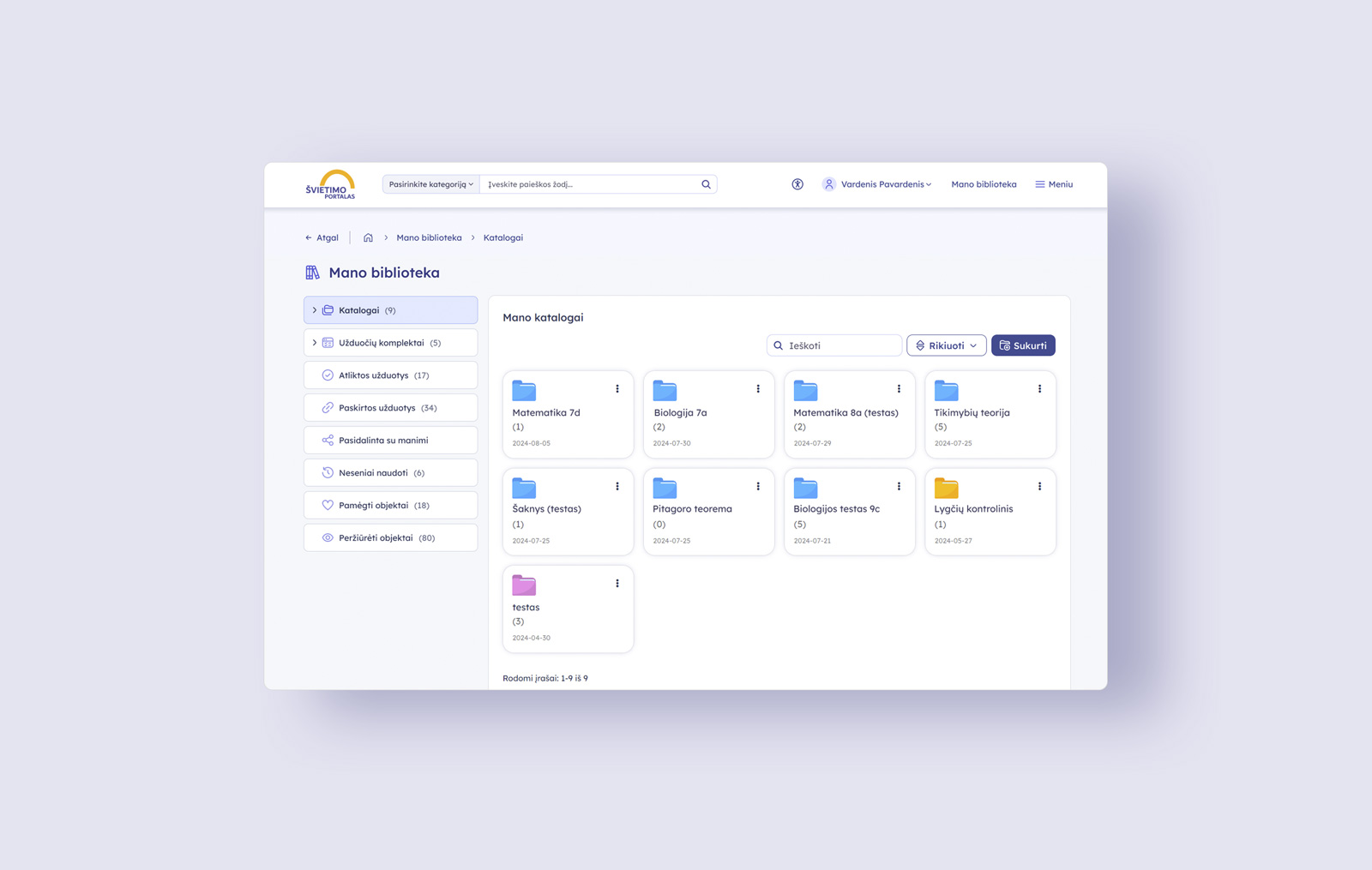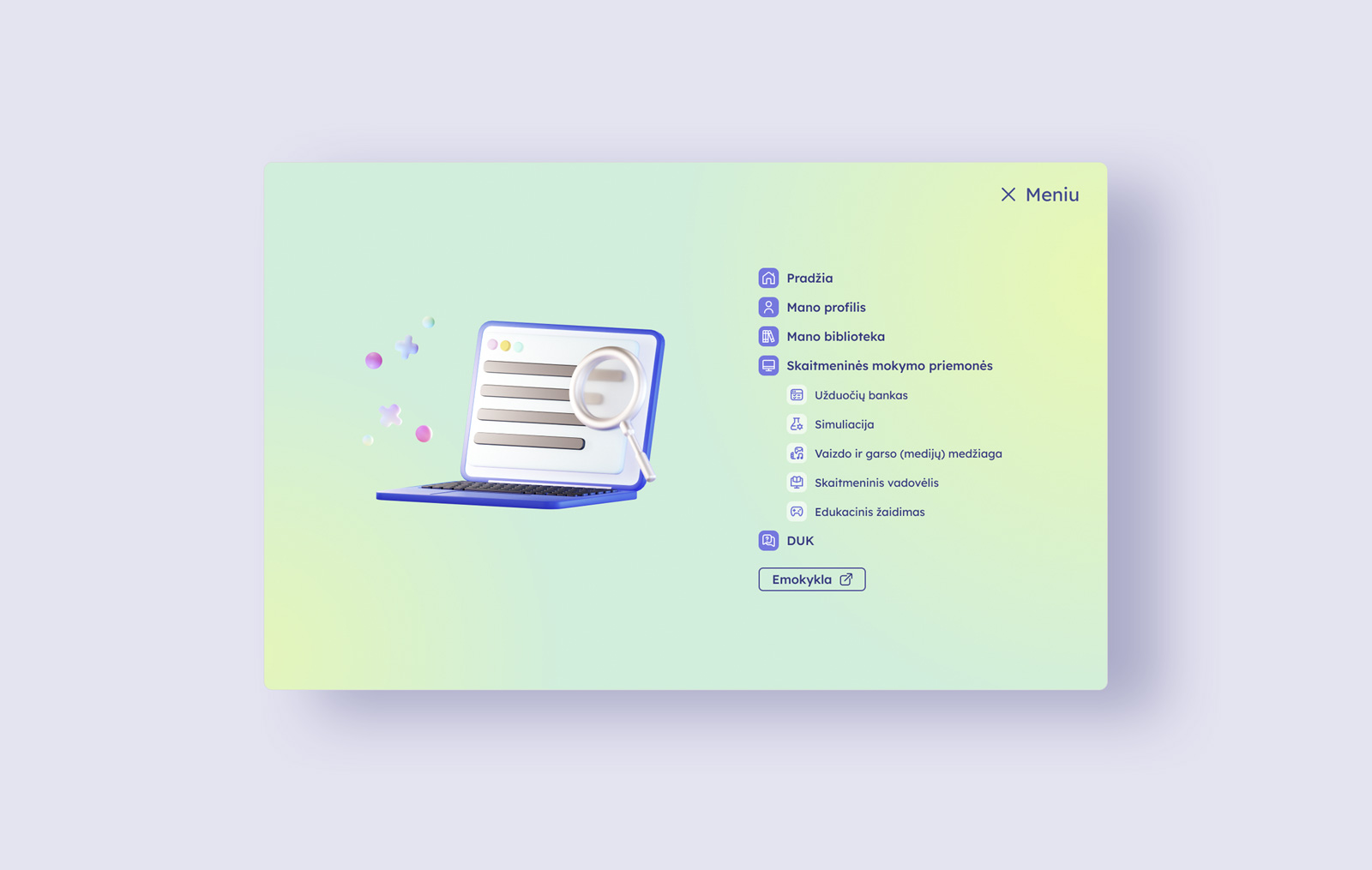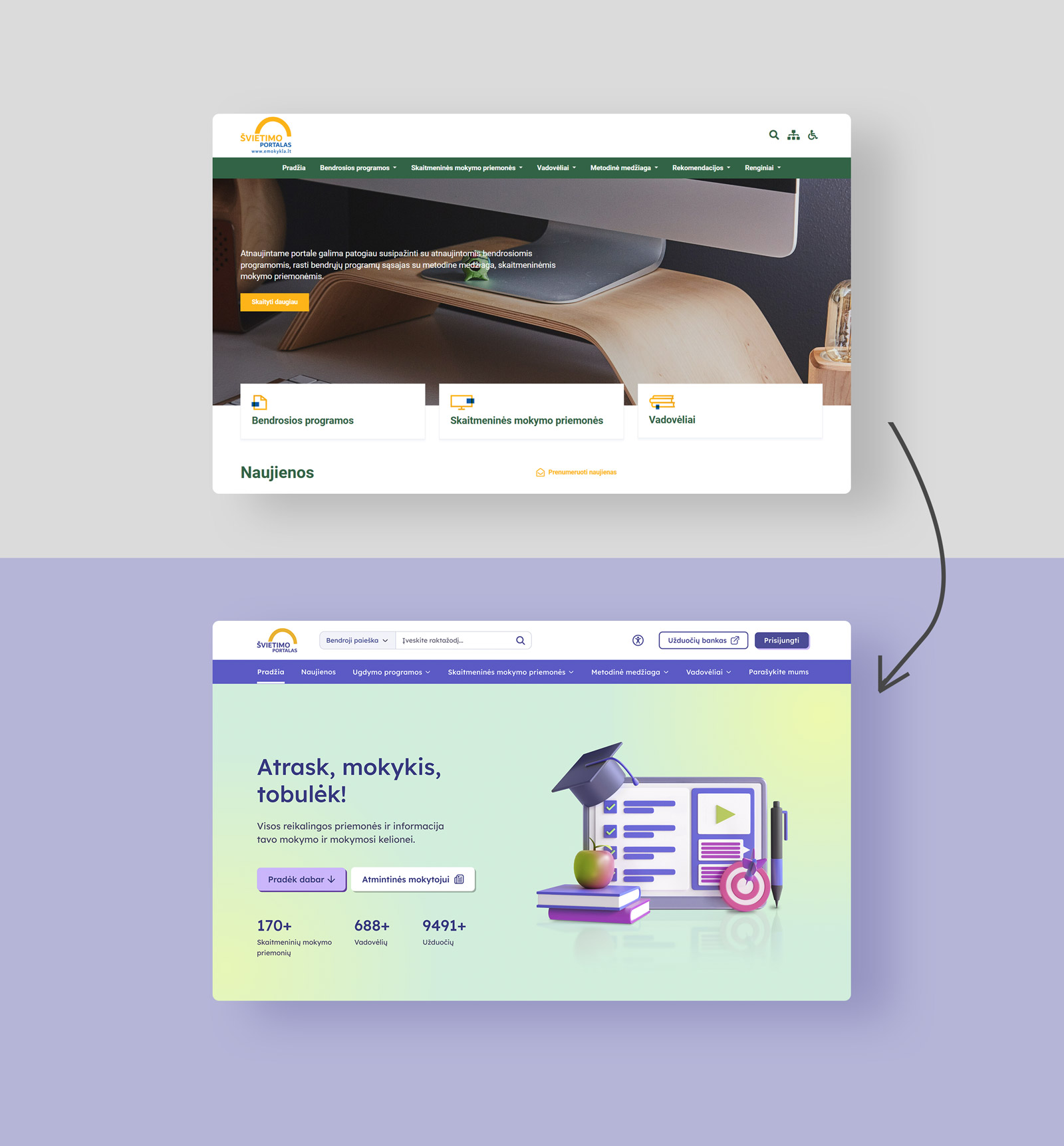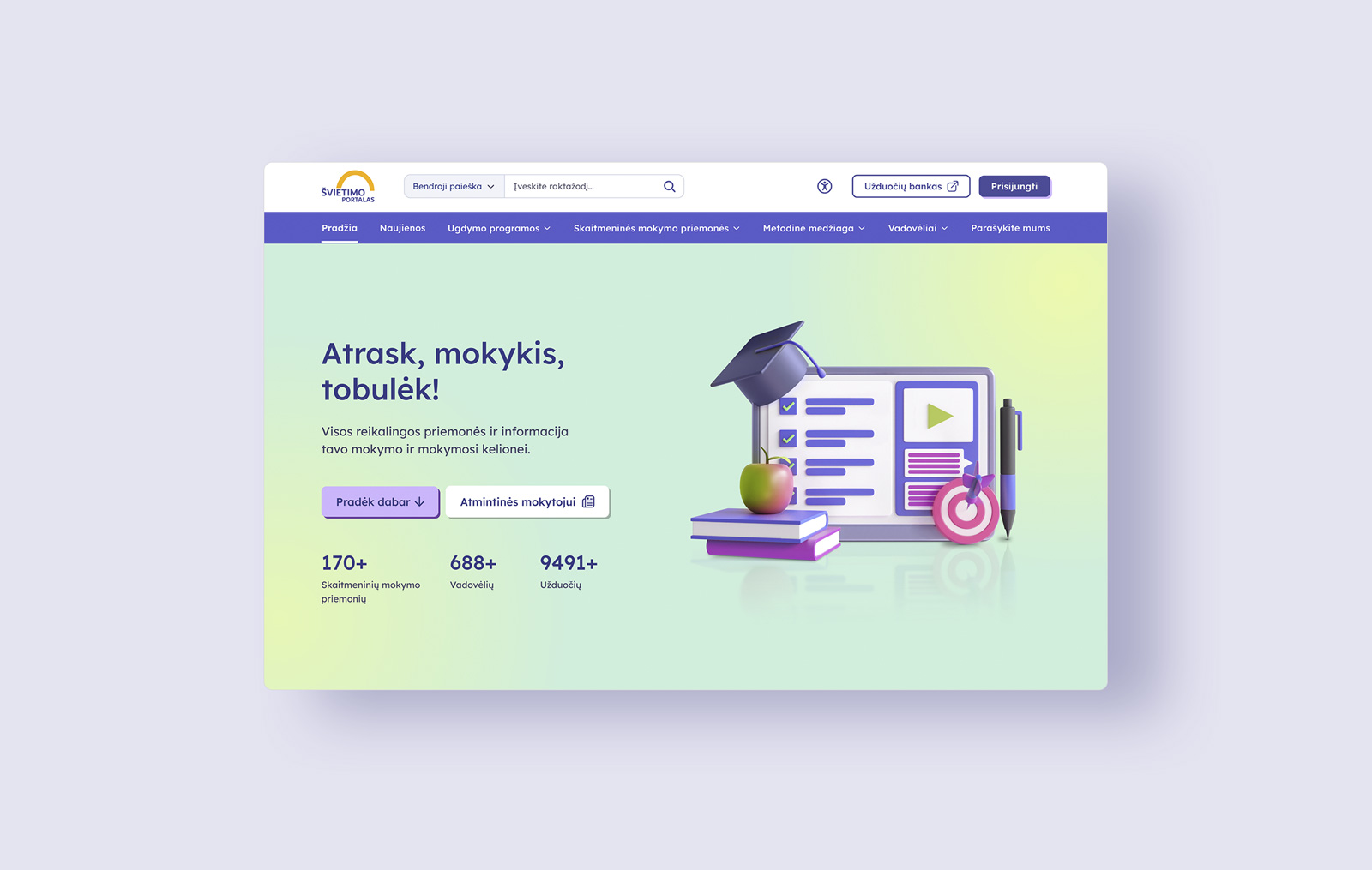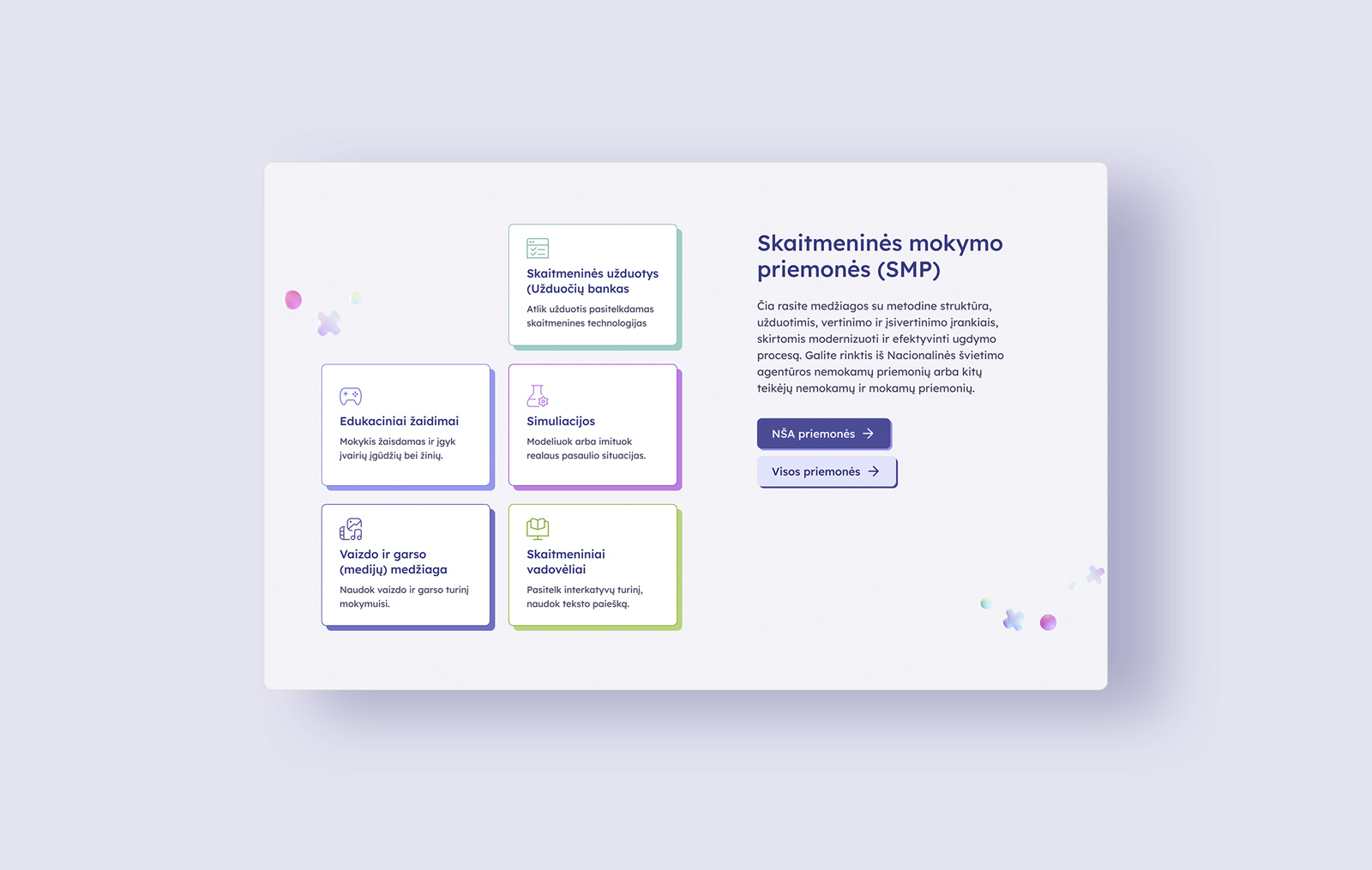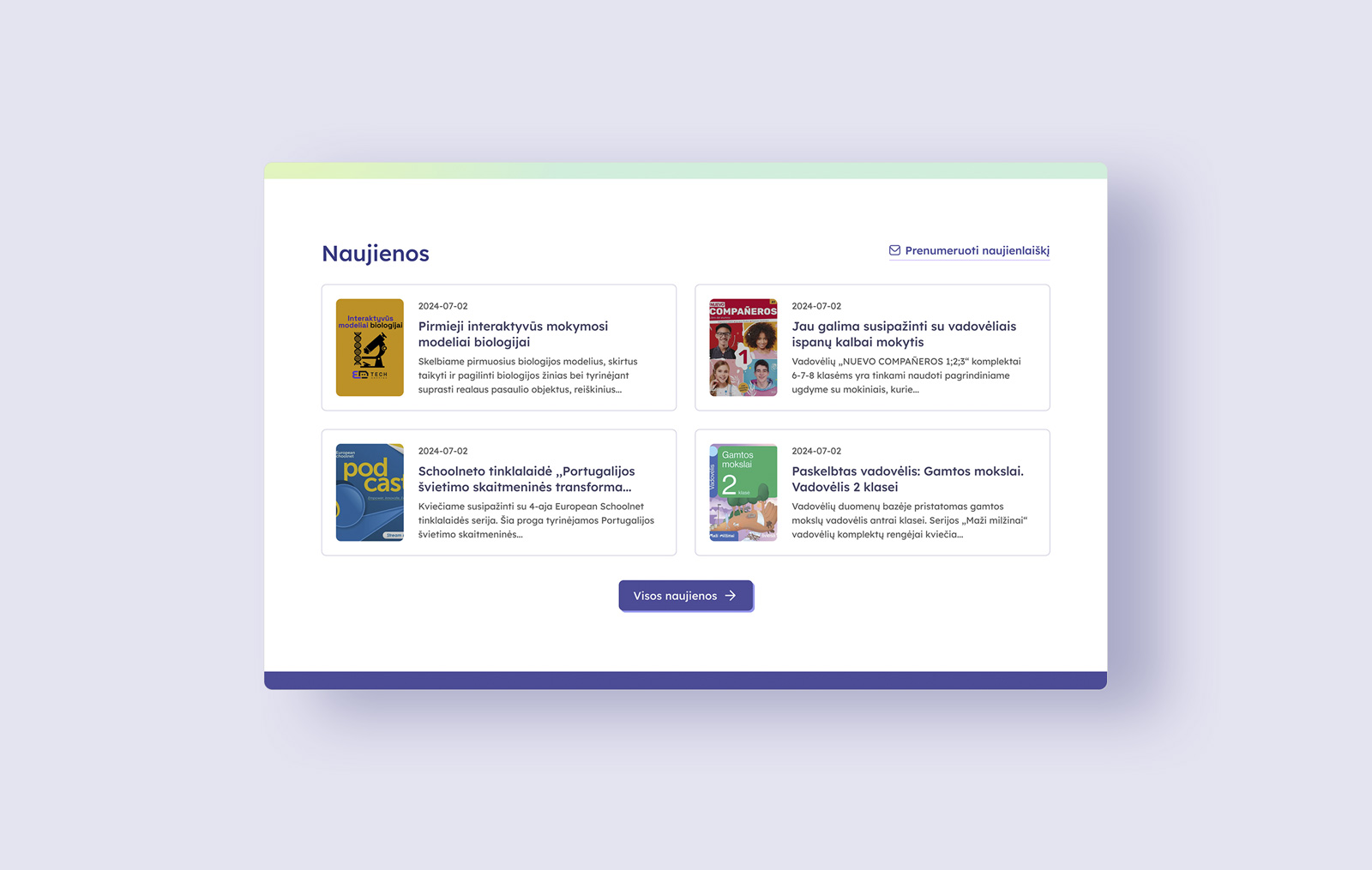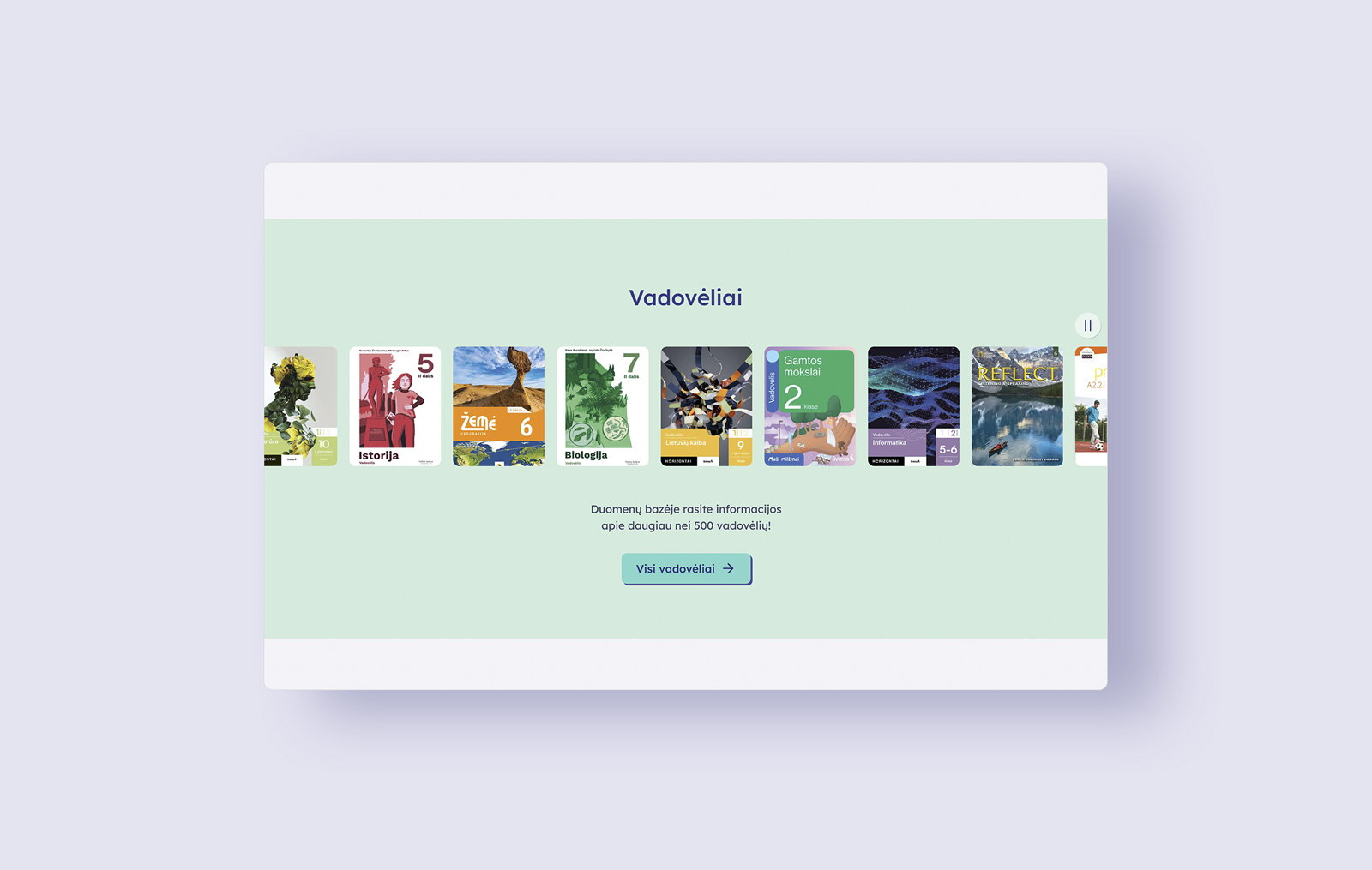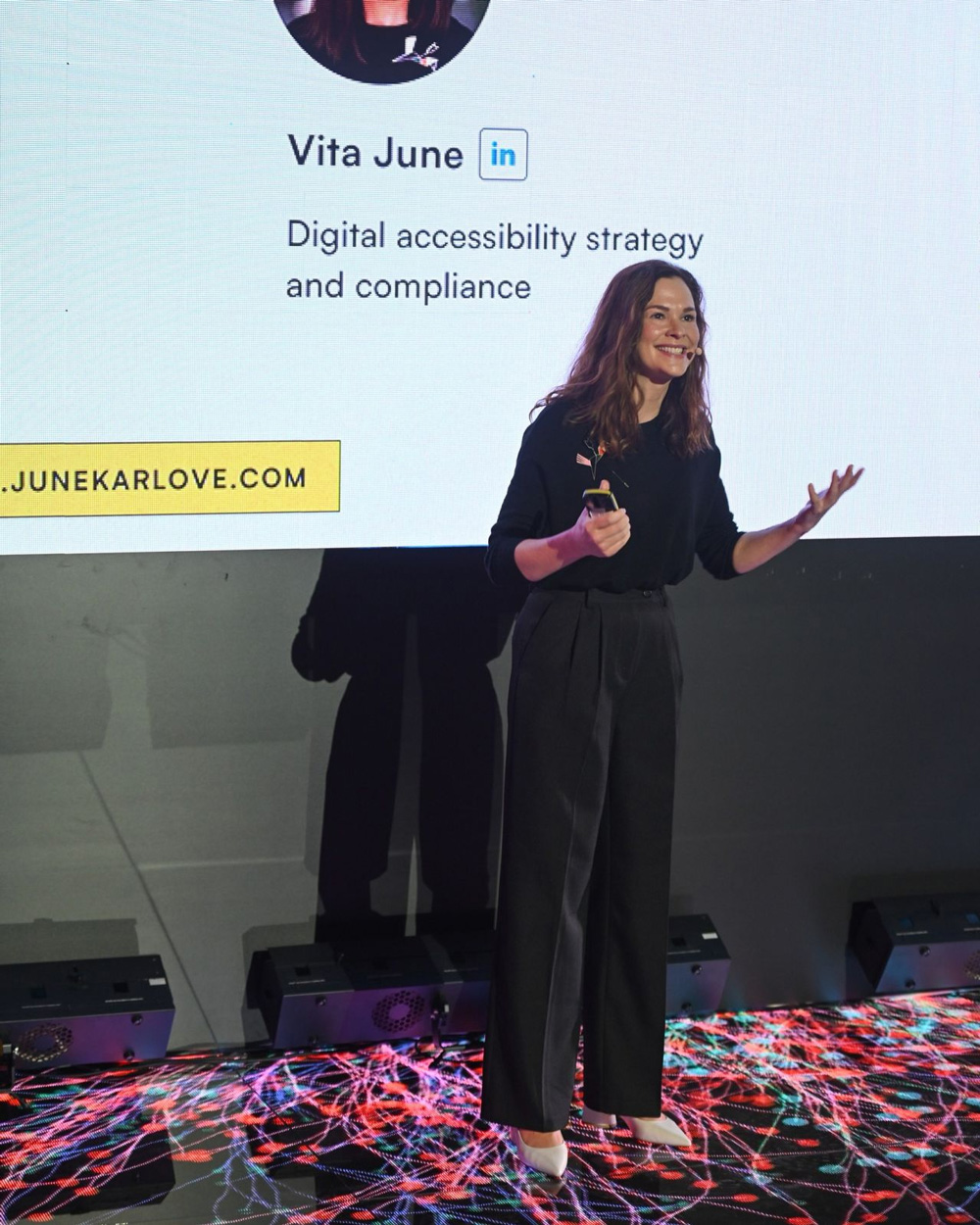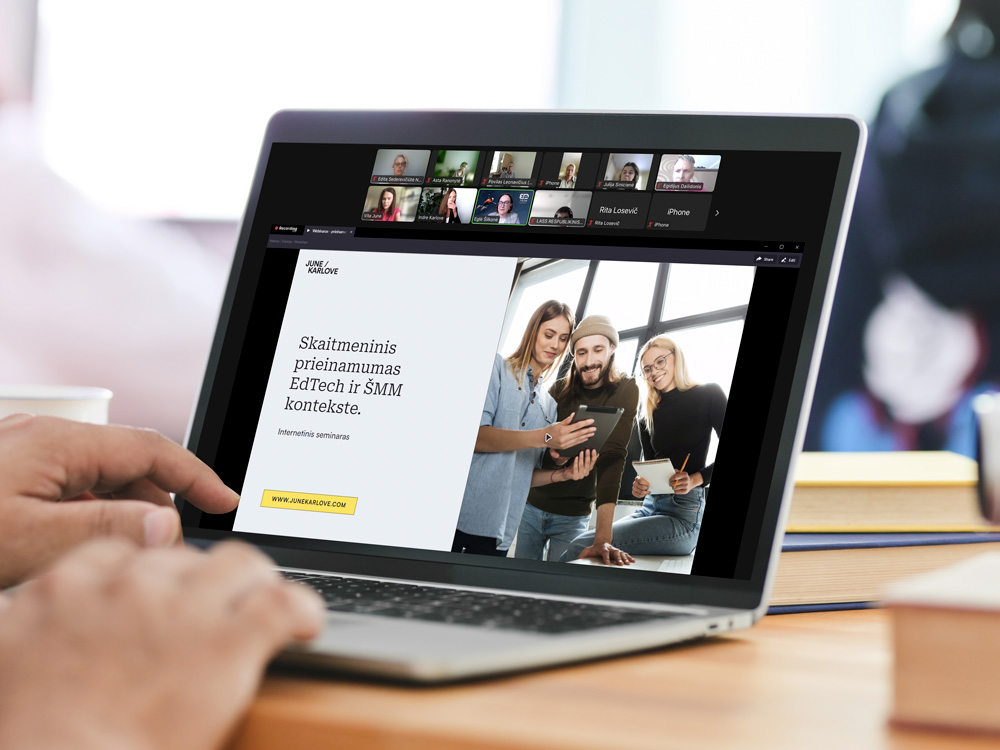Modernising a public education platform through user-centred design and accessibility
The Emokykla.lt (Švietimo portalas) website is the central hub for education in Lithuania, providing digital tools and resources for teachers and students across the country. In 2024, the Lithuanian National Agency for Education (NŠA) launched a full redesign to better support not only educators, but also students and self-directed learners.
We led the user research phase, provided creative direction for user experience (UX) and user interface (UI) design, and delivered an accessibility evaluation in alignment with the Web Content Accessibility Guidelines (WCAG).
The challenge ahead
The original Emokykla.lt platform, while functionally rich, was heavily oriented toward educators and lacked modern usability and accessibility standards.
Key challenges included:
- An outdated user interface and fragmented user experience.
- Limited support for students.
- Digital accessibility barriers.
- No structured approach to validating the user experience.
The redesign took place within the national Digital Transformation of Education (EdTech) project — an initiative aimed at promoting educational innovation through digital technologies across the education sector.
How we approached it
Leading a human-centred research process
We led and coordinated the user research phase in close collaboration with the client and an external research partner. Our role involved defining the overall research scope, goals, and methodology, while ensuring alignment between all teams involved.
Together, we oversaw the execution of remote usability testing on the existing platform, as well as in-depth empathy interviews with both teachers and students. These efforts resulted in the development of detailed user personas and a digital literacy barometer — tools that helped surface not only functional needs but also the unspoken expectations and challenges different user groups faced when engaging with various digital learning tools.
Defining the UX and design direction for the Digital Learning Tools (SMP) platform
Grounded in insights from the user research phase, we led the design of the SMP platform — a new module within Emokykla.lt created to host interactive educational content such as digital tasks, simulations, educational games, media, and digital textbooks.
While a basic structure existed when we joined, we took the lead in shaping the overall UX and design direction, refining the platform’s usability, visual identity, and interaction patterns. Our work resulted in a modern, modular, and accessible interface that supports how students and teachers discover, navigate, and benefit from digital learning tools, prioritising clarity, engagement, and ease of use.
Modernising Emokykla.lt with a user-centred visual and UX refresh
While the main Emokykla.lt portal already existed, it needed a significant transformation. Information was hard to find, the visual identity was outdated, and the experience didn’t reflect the evolving needs of its users — nor did it function well as an entry point to the new SMP platform.
Building on the design direction we had established for SMP, we guided the refresh of Emokykla.lt with a strong focus on usability, accessibility, and visual appeal. Working closely with the design and development teams, we restructured navigation, refined content hierarchies, and introduced a more friendly and inspiring visual tone. The result is a cohesive platform that now better supports exploration, learning, and connection across both old and new content.
Accessibility evaluation & report
At launch, we conducted a full expert accessibility evaluation of the completed platform, based on WCAG 2.1 AA guidelines. Combining manual testing with automated tools, we assessed real-world use cases such as keyboard navigation, screen reader support, and interface clarity.
Our structured report mapped identified issues directly to WCAG 2.1 AA criteria — providing clear traceability and a shared reference for remediation work. Our structured report included:
- A full list of applicable success criteria with issue mapping.
- Prioritised issues based on severity and functional impact.
- Actionable recommendations for developers, designers, and content teams.
Although accessibility was integrated from the early design stages, limited development time and budget meant that many improvements had to be postponed. This final evaluation helped clarify the current state and define a roadmap for future accessibility updates.
What changed
The redesigned Emokykla.lt platform is now more inclusive, intuitive, and supportive of the diverse needs of both learners and educators. Users responded positively to the changes, with clear validation from teachers, students, and agency leadership alike. The introduction of a flexible UX framework set the stage for ongoing improvements and future iterations.
More than just a visual update, the project became a tangible example of user-centred digital transformation within the public sector — showing how thoughtful design and collaboration can lead to lasting impact at scale.


